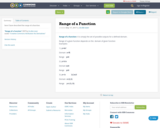
here I have described the range of a function
- Subject:
- Education
- Mathematics
- Material Type:
- Assessment
- Date Added:
- 05/17/2017

here I have described the range of a function

This week we will examine the concept of a function, a fundamental concept underlying all of modern mathematics. You’re undoubtedly already familiar with functions in an intuitive sense: a function is something which, given
an input, produces an output. But you’ve probably never seen the formal definition of a function as it relates to set theory, which is what we’ll look at this week.
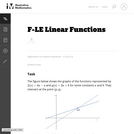
This task requires students to use the fact that on the graph of the linear function h(x)=ax+b, the y-coordinate increases by a when x increases by one. Specific values for a and b were left out intentionally to encourage students to use the above fact as opposed to computing the point of intersection, (p,q), and then computing respective function values to answer the question.

This seminar will allow you to identify the domain and range of a relation, and then use the relationships that exist in order to determine whether or not the relation is a function. You will define functions, and you will learn how to identify and use functional notation. You will gain an understanding of the concept of a functional relationship which will allow you in the future to study specific functions in depth.StandardsCC.2.2.HS.C.1 - Use the concept and notation of functions to interpret and apply them in terms of their context.

This seminar will help you to understand how the graph of a function relates to the function itself, and how to determine the domain and range of a function by examining its graph. It is necessary to be able to determine a function’s domain and range in order to understand how different functions are restricted by their rules. Understanding how to visually interpret functions by looking at their graphs will also allow you to quickly gather important information about the function. StandardsCC.2.2.HS.C.2 Graph and analyze functions and use their properties to make connections between the different representations.
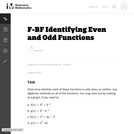
In this task students use algebraic methods to determine whether each of the functions is odd, even, or neither.

Emotions play a crucial role in our lives because they have important functions. This module describes those functions, dividing the discussion into three areas: the intrapersonal, the interpersonal, and the social and cultural functions of emotions. The section on the intrapersonal functions of emotion describes the roles that emotions play within each of us individually; the section on the interpersonal functions of emotion describes the meanings of emotions to our relationships with others; and the section on the social and cultural functions of emotion describes the roles and meanings that emotions have to the maintenance and effective functioning of our societies and cultures at large. All in all we will see that emotions are a crucially important aspect of our psychological composition, having meaning and function to each of us individually, to our relationships with others in groups, and to our societies as a whole.
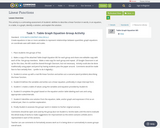
This activity is a culmnating assessment of students' abilities to describe a linear function in words, in an equation, in a table, in a graph, identify a solution, and explain the solution.

This seminar will teach you how to calculate the domain of a function when it is written in functional notation. You will learn how to make these calculations when the function has variables in the denominator of a fraction, and/or when the function has variables under a radical. You will learn the importance of mastering this skill so that future studies of functions may be conducted within the restrictions of the domain.StandardsCC.2.2.HS.C.1 Use the concept and notation of functions to interpret and apply them in terms of their context.
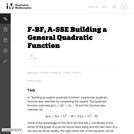
This task is for instructional purposes only and builds on ``Building an explicit quadratic function.''
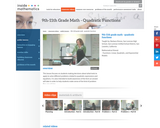
This lesson focuses on students making decisions about what tools to apply to solve different problems related to quadratic expressions and equations. It is also intended to build awareness of the form an answer will take in order to help students make sense of the kind of problem they are solving. (9th/10th/11th Grade Math)
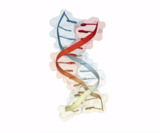
This resource explains the structure and function of DNA using PowerPoint. Videos and practice are linked into the presentation.
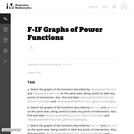
This task requires students to recognize the graphs of different (positive) powers of x. There are several important aspects to these graphs. First, the graphs of even powers of x all open upward as x grows in the positive or negative direction. The larger the even power, the flatter these graphs look near 0 and the more rapidly they increase once the distance of x from 0 excedes 1.

This task is intended for instruction and to motivate "Building a general quadratic function.''
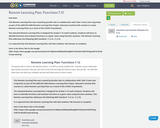
This Remote Learning Plan was created by Jennifer Gier in collaboration with Tyler Cronin and Craig Hicks as part of the 2020 ESU-NDE Remote Learning Plan Project. Educators worked with coaches to create Remote Learning Plans as a result of the COVID-19 pandemic.The attached Remote Learning Plan is designed for Grades 7-12 math students. Students will learn to identify functions and evaluate functions at a given value using function notation. This Remote Learning Plan addresses the following NDE Standard: 11.2.1a, 11.2.1bIt is expected that this Remote Learning Plan will take students 140 minutes to complete.Here is the direct link to the Google Slide: https://docs.google.com/presentation/d/1eBIpImvKMWaAZNwdJMH7chKmAxYGGFVlHCgm2kT3rc0/edit?usp=sharing
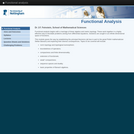
As taught in 2006-2007 and 2007-2008.
Functional analysis begins with a marriage of linear algebra and metric topology. These work together in a highly effective way to elucidate problems arising from differential equations. Solutions are sought in an infinite dimensional space of functions.
This module paves the way by establishing the principal theorems (all due in part to the great Polish mathematician Stefan Banach) and exploring their diverse consequences. Topics to be covered will include:
– norm topology and topological isomorphism;
– boundedness of operators;
– compactness and finite dimensionality;
– extension of functionals;
– weak*-compactness;
– sequence spaces and duality;
– basic properties of Banach algebras.
Suitable for: Undergraduate students Level Four
Dr Joel F. Feinstein
School of Mathematical Sciences
Dr Joel Feinstein is an Associate Professor in Pure Mathematics at the University of Nottingham. After reading mathematics at Cambridge, he carried out research for his doctorate at Leeds. He held a postdoctoral position in Leeds for one year, and then spent two years as a lecturer at Maynooth (Ireland) before taking up a permanent position at Nottingham. His main research interest is in functional analysis, especially commutative Banach algebras.
Dr Feinstein has published two case studies on his use of IT in the teaching of mathematics to undergraduates. In 2009, Dr Feinstein was awarded a University of Nottingham Lord Dearing teaching award for his popular and successful innovations in this area.
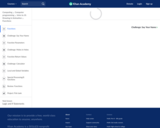
Pamela explains how you can write your own custom functions to group your code and make it more reusable.
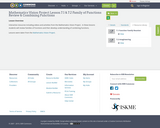
Interactive resources including videos and activities from the Mathematics Vision Project. In these lessons students will review Families of Functions and then develop understanding of combining functions.Lessons were taken from the Mathematics Vision Project.
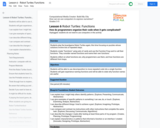
Students play the boardgame Robot Turtles again, this time focusing on puzzles whose solutions involve lots of repeated steps.
Students create “functions” using sets of cards and use the Function Frog card to call their functions. They consider named functions and name their own functions.
Students reflect on what functions are, why programmers use them, and how functions are different from loops.
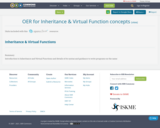
Introduction to Inheritance and Virtual Functions and details of its syntax and guidance to write programs on the same